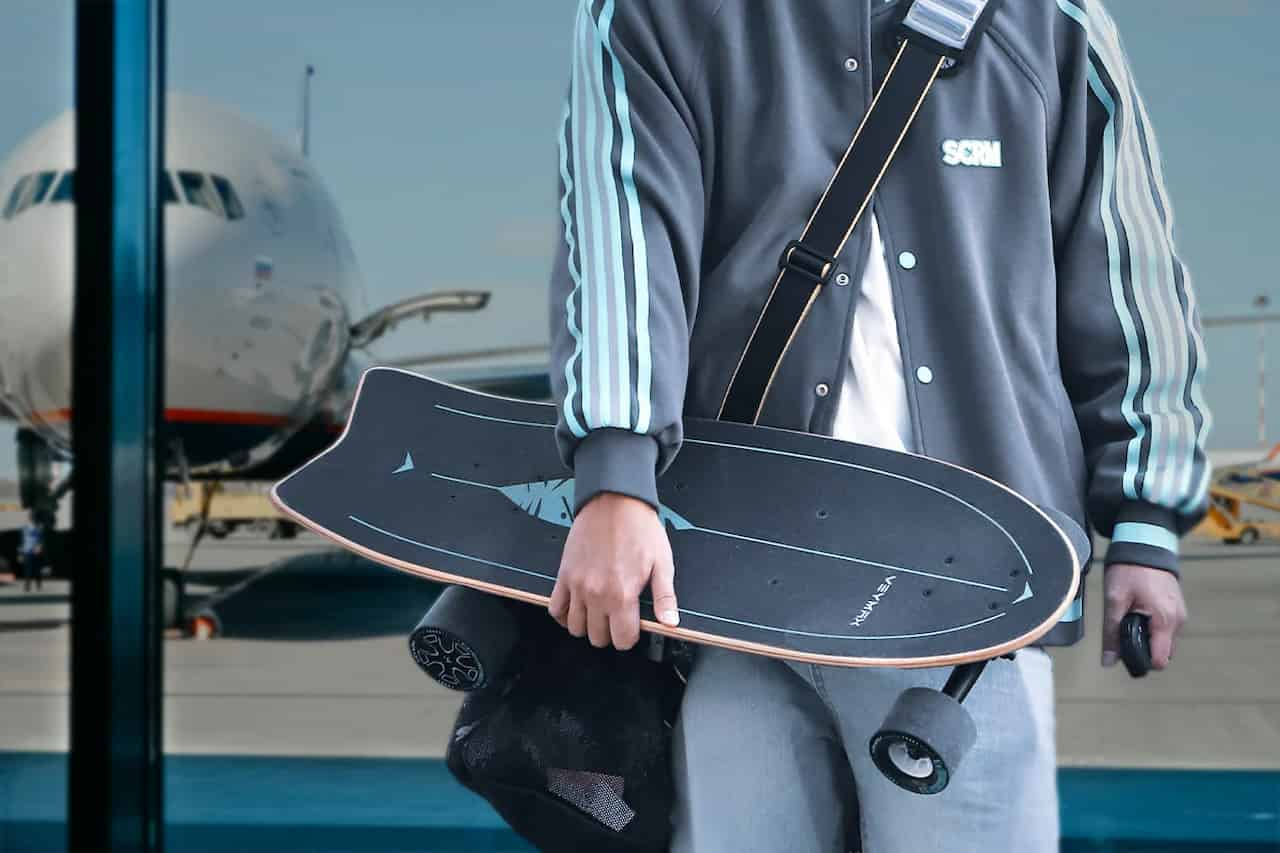Electric skateboards have gained popularity as a fun and efficient mode of transportation, but bringing them on air travel can be a concern for many travelers. With suitable materials, design, and adherence to safety regulations, you can create a safe air travel electric skateboard that meets airline guidelines and ensures a smooth journey. This article will guide you through making a safe air-travel electric skateboard.
Understanding Airline Regulations
Before diving into the creation process, it’s crucial to understand the airline regulations regarding electric skateboards. All airlines have different rules, so check with yours. Research and comply with these regulations to avoid issues during air travel. Generally, most airlines allow electric skateboards as carry-on or checked luggage, provided they meet specific criteria:
- The battery must be removable and within the airline’s capacity limits (usually under 160 Wh).
- We should protect the battery from damage and short circuits.
- You should be able to turn the skateboard on and off safely.
Choosing The Right Components
Selecting the appropriate components is crucial to creating a safe air-travel electric skateboard tical. Here are the main parts you’ll need:
- Deck: Choose a durable, lightweight deck material, such as maple or bamboo. Ensure the deck is sturdy enough to support your weight and the electrical components.
- Trucks and Wheels: Opt for high-quality trucks and wheels that provide stability and smooth riding. Consider wheel size and durability based on your riding style and terrain.
- Motor: Select a motor that is powerful enough to propel you at your desired speed and efficient enough to maximize battery life. Ensure the motor matches your chosen battery and electronic speed controller (ESC).
- Battery: Choose a battery that complies with airline regulations, typically under 160 Wh. Lithium-ion batteries are famous for their high energy density and lightweight properties. Ensure the battery has a built-in battery management system (BMS) for safety.
- ESC: The electronic speed controller regulates the power from the battery to the motor. Choose an ESC compatible with your engine and battery with safety features such as over-current protection and low-voltage cutoff.
- Remote Control: Select a reliable and ergonomic remote control that lets you easily control your speed and braking.
Assembling The Electric Skateboard
Once you have gathered all the necessary components, it’s time to assemble your electric skateboard. Follow these steps:
- Mount the trucks onto the deck, ensuring they are securely attached and aligned correctly.
- Install the wheels onto the trucks, ensuring they spin freely and are tightened correctly.
- Attach the motor mount to the truck and secure the motor onto the mount. Ensure proper alignment and tension of the belt or gear system.
- Connect the ESC to the motor and battery, following the manufacturer’s instructions. Make sure all connections are secure and insulated to prevent short circuits.
- Ensure you firmly attach the battery enclosure to the deck and protect it from impacts.
- Connect the remote control receiver to the ESC, following the manufacturer’s guidelines.
- Double-check all connections and ensure that the wiring is neat and protected from damage.
Implementing Safety Features
Consider incorporating these safety features to make your air travel electric skateboard as safe as possible.
- Design your skateboard with an easily removable battery pack that you can detach for air travel. This allows you to comply with airline regulations and protect the battery during transit.
- Battery Protection: Use a sturdy battery enclosure that prevents damage from impacts and vibrations. Include padding or foam to cushion the battery and prevent it from shifting during travel.
- Install a safety switch that lets you quickly turn the skateboard on and off. This prevents accidental activation during transportation and storage.
- To protect against overloading and short circuits, incorporate a fuse or circuit breaker into the electrical system.
- Regenerative Braking: Choose an ESC and motor combination that supports regenerative braking. This feature helps to extend your battery life and provides additional braking power for safer riding.
Testing And Fine-Tuning
Before taking your electric skateboard on air travel, thoroughly test and fine-tune it to ensure optimal performance and safety. Here’s what you should do:
- Charge the battery fully and check for any signs of damage or overheating.
- Test ride the skateboard in a safe, open area to assess its speed, acceleration, and braking capabilities.
- Fine-tune the ESC and remote control settings to your preferences, ensuring smooth and responsive control.
- Check for any loose connections, vibrations, or unusual noises during the test ride, and address any issues promptly.
- Conduct range tests to estimate battery life and plan your rides accordingly.
Packing For Air Travel
When packing your electric skateboard for air travel, follow these guidelines.
- Following airline regulations, please remove the battery and pack it separately in your carry-on luggage.
- Use a sturdy skateboard bag or case to protect your skateboard from damage during transit.
- Secure any loose parts or components to stop them from shifting or becoming damaged.
- Include a copy of the airline’s electric skateboard policy and any necessary documentation for the battery, such as a safety data sheet or manufacturer’s specifications.
Conclusion
Creating a safe electric skateboard for air travel necessitates careful planning, component selection, and compliance with safety regulations. Understanding airline guidelines, selecting the right parts, implementing safety features, and thoroughly testing your skateboard can ensure a secure and enjoyable air travel experience.
Always prioritize safety and comply with airline regulations when traveling with your electric skateboard. With the proper preparation and precautions, you can take your electric skateboard on your next flight with confidence and peace of mind.





